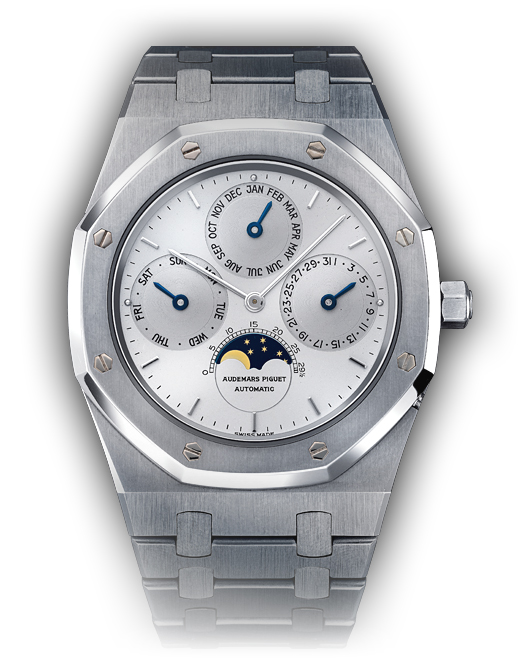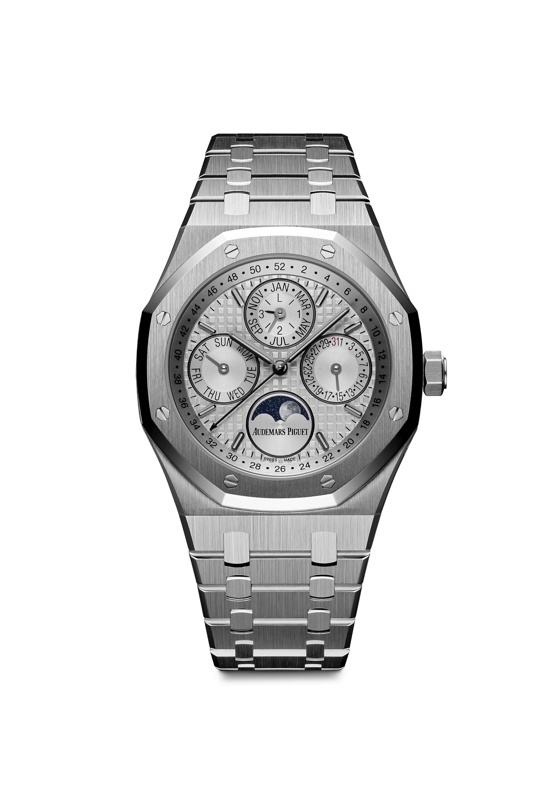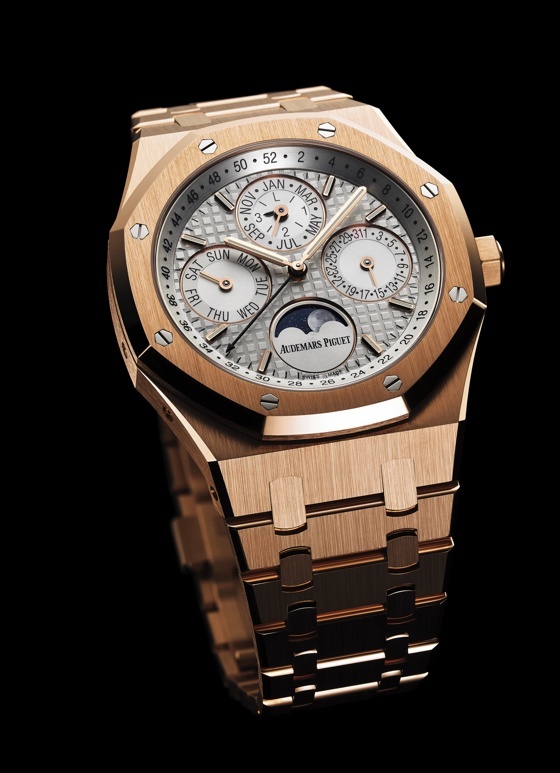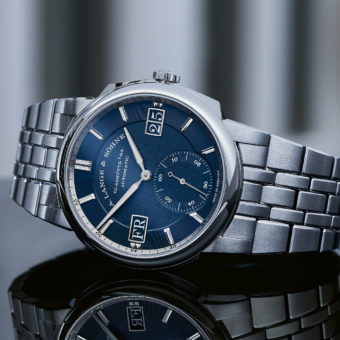About a year ago, I began writing the “Vintage Eye for theModern Guy” series in an effort to spotlight some of the historical influences behind many of the world’s most popular watches. My subjects have ranged from complete re-creations of vintage models by some brands to contemporary re-interpretations by others; we have covered the good, the luxurious, and the truly unique, all to hopefully put some of the best watches in the most appropriate historical context for our readers. This week, I wanted to loop back to the very first piece I covered for WatchTime.com, Audemars Piguet’s iconic Royal Oak — this time focusing on one of the most popular complications within the series, the Audemars Piguet Royal Oak Perpetual Calendar.

The Royal Oak Perpetual Calendar seems today to be a quintessential part of the modern AP collections, but this particular complication, an extension of Gérald Genta’s original Royal Oak series released in 1972, traces its origins only as far back as the early 1980s. It was a piece characterized by a 39-mm Royal Oak case in a variety of metals; a super-thin automatic movement, Caliber 2120/2800; and a host of perpetual calendar dial displays, including moon-phase, date, month, et cetera. It had many of the features common to other Royal Oaks, but also developed other, more contemporary features over the past 35 years that have made it recognizable in its own right, to both watch aficionados and casual observers.

The modern Royal Oak Perpetual Calendar (Ref. 26574), was updated last year, with two steel versions, two rose gold, and one novelty yellow-gold variation. Housed in a recognizable 41-mm Royal Oak case with an octagonal bezel, a screw-down crown, and a sapphire caseback revealing the movement, the piece fastens to the wrist via the famous integrated Royal Oak bracelet. Behind the sapphire caseback, and powering the watch’s various complications, is the automatic manufacture Caliber 5134, complete with a fully decorated rotor, which holds a power reserve around 40 hours. What the movement is capable of is clear on the dial: at the 12 o’clock mark resides the month and leap-year indicator; at 3 o’clock, the date; at 6 o’clock, the moon-phase, and toward 9 o’clock, the day of the week. Also notice the inner bezel indicating the week of the year, the “Grande Tapisserie” pattern covering the dial, and the luminescent hands and applied numerals common in Royal Oaks. Both gold models are priced by the brand at $95,700, while the steel versions are priced at $60,900.

The modern Audemars Piguet Perpetual Calendar shares plenty of similarities and differences with the vintage models. The overarching design codes have more or less remained the same, with an octagonal Royal Oak case, crown, and perpetual calendar function, but even these are with slight changes. The now 41-mm case (previously 39 mm) and crown now have an even more refined finishing, the caseback is now transparent compared to the original’s solid one, and the modern, automatic movement is a more complicated mechanism focusing more on contemporary features than striving for thinness. The most dramatic changes are found on the dial, where the perpetual calendar features now include a week indicator and corresponding hand, and a leap-year indicator within the month subdial. Also notice the change in hands, hour markers, and dial pattern— from stick to Royal Oak luminescent, from subtle applications to thick gold marks, and from a smooth white to a “Grande Tapisserie,” respectively. All of these changes have come over the lifetime of the series, and have seemingly chosen to better connect the modern Perpetual Calendar with other models in the larger Royal Oak lineage.

What is important to note is that the modern Royal Oak Perpetual Calendar is not a series that necessarily set out be a vintage re-interpretation, modern re-creation, or any combination of the two — it’s a piece that is meant to represent the peak of luxury within the Audemars Piguet brand, with the features, price, and quality level necessary to meet this goal. With that said, both the original Royal Oak and the Perpetual Calendar version are clearly successful designs, and Audemars Piguet has wisely worked largely within these 1970s design codes to continue meeting the demands of the modern luxury market.

For our most recent article, in which I take a look at the historical inspirations for the Patek Philippe Calatrava Pilot Travel Time, click here.
Caleb Anderson is a freelance writer for various publications. Since first learning about horology, he has garnered extensive knowledge on vintage watches, and spends much of his time sharing his opinions within the field. Currently located near New York City, he is a persistent student in all things historical, a writer on many topics, and a casual runner.







Dear,
I am very interested for Panerai blue dial PAM 688. Can you please give some your opinion or suggestion about that watch?
Thank you for your time and attention.
Best regards, Damir